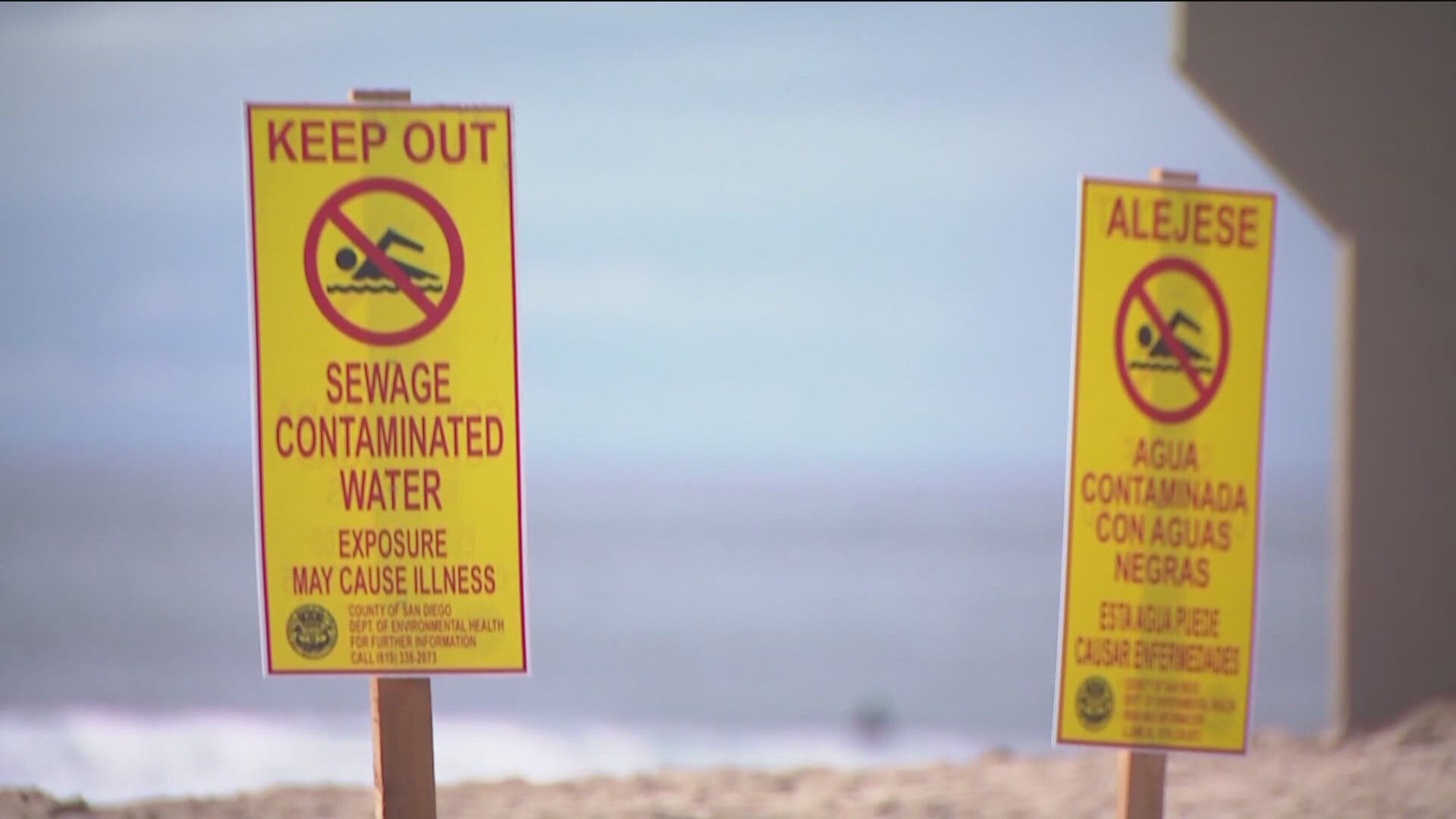SAN DIEGO — Scientists at San Diego State University have successfully completed a study with a new early warning system to track the levels of untreated sewage in the Tijuana River.
The team, led by SDSU biologist Trent Biggs and environmental engineer Natalie Mladenov, used specialized fluorescence sensors to detect and differentiate treated and untreated sewage where the river crosses the international border and in a creek of its estuary.
"Our overall objective was to create a real-time sewage monitoring system," Biggs told City News Service. "We had two main unknowns: What percentage of pollutants in the river are raw sewage with high bacteria levels - - which is critical to monitor progress as new infrastructure is installed -- and what happens to that sewage?"
The team began work on the San Diego River, but quickly decided to move to the Tijuana River, where untreated sewage has flowed unabated for several years from broken wastewater infrastructure into the Pacific Ocean.
Through the team's use of fluorescence spectroscopy -- in essence, shining waves of light through the water and seeing what bounces back to the sensor, similar to a black light -- they could determine how much of the detritus in the river was untreated sewage. During two 24-hour data collection periods, that percentage varied between 50-70% untreated, raw sewage.
Organic compounds found in sewage emit different wavelengths of light than uncontaminated water, allowing the sensors to distinguish between them.
The data is instantly transmitted to the researchers in real-time, an improvement over existing sewage tracking systems which can take up to two weeks to alert water quality managers of contamination.
Over the course of more than two years, the researchers tested the accuracy of the sensor readings against samples they collected manually and analyzed in the lab. They found that sewage levels -- particularly at the estuary testing location -- decreased during high tides, which flushed river water out into the ocean, but increased after low tides and moderate tides.
In the main stem of the Tijuana River, ocean tides had less of an impact, but during heavy rain events, the percentage of harmful pollutants dropped dramatically, diluted by (relatively cleaner) runoff water.
"Monitoring during storm events is really critical, and it is really hard," Biggs told City News Service. "The turbidity caused by the high volume in the river can really mess things up. High sediment loads can screw up instruments."
The biologist said that ideally, the system would expand to another point along the length of the river and into the ocean to monitor sewage and bacterial levels into San Diego County in real-time.
"We're not there yet," Biggs said, who said more funding is always needed and partnerships with local organizations such as the Southwest Wetlands Interpretive Association and Tijuana River National Estuarine Research Reserve could further research capability.
Ultimately, he said, SDSU would probably need to hand the project off to a government agency to have a fully-staffed research team along the river.
On Wednesday, the International Boundary and Water Commission announced it awarded the contract for a project to expand the South Bay International Wastewater Treatment Plant -- one of the culprits for sewage leaking into the watershed.
Over the course of the project, the IBWC will use the more than $400 million in federal funding secured by the Congressional delegation to repair and expand the plant.
"Today's announcement for the South Bay International Wastewater Treatment Plant is a step in the right direction in beginning to seriously address toxic waste and raw sewage flowing from the Tijuana River," said Sen. Alex Padilla, D-California.
"The health and environmental hazards created by this pollution has contaminated Southern California's air and water for too long, and I'm committed to fighting for more federal resources to address this crisis with the urgency it demands."
In March, the San Diego Congressional delegation secured over $156 million in funding toward critical repairs to the South Bay International Wastewater Treatment Plant.
In 2019, the delegation secured $300 million to expand the South Bay plant from 25 million gallons per day to 50 million gallons per day. In 2022, the delegation passed legislation to clear the path for the IBWC to use the funds to address harmful pollutants in the Tijuana River Valley.
In May 2024, elected officials called on the U.S. Centers for Disease Control and Prevention to look into the contaminants in the water, soil, and air from the sewage and the connection to reported increases in illnesses and other symptoms. The CDC has agreed to begin an investigation into the public health impacts of the Tijuana River sewage pollution.
Biggs said the system could not only be scaled up to much larger rivers and other bodies of water, but the spectroscopy could be adjusted for more than 150 different compounds, allowing tracking of different materials depending on the watershed.
"SDSU has shown the potential for this and its' potential limitations," he said. "But what it has really revealed is that this is a totally solvable problem. For the first year of the project there was really no sewage flow, but then it was like it just turned on.
"It's going to be starting to get fixed this fall. I'm confident," Biggs said.
WATCH RELATED: Imperial Beach mayor Paloma Aguirre discusses the cross-border sewage crisis affecting the city

